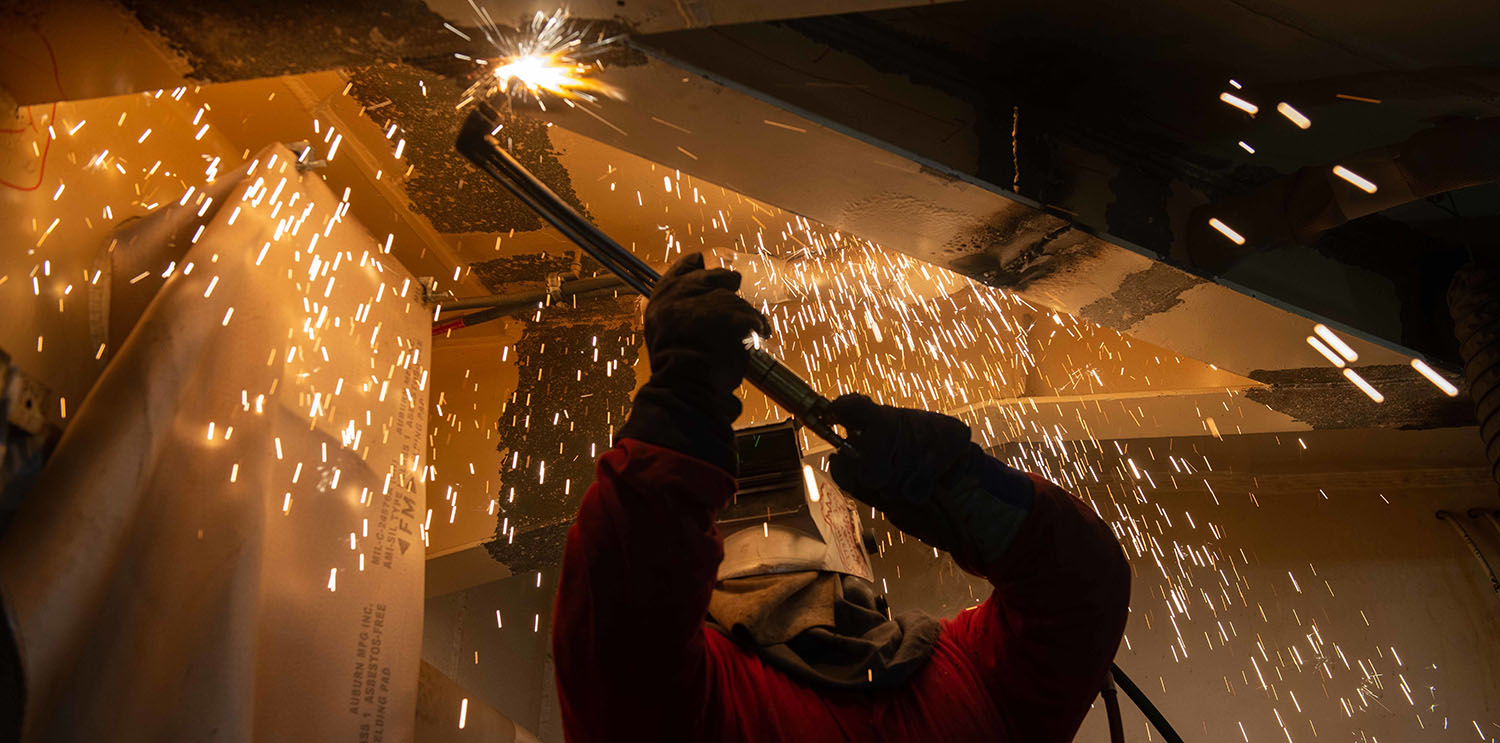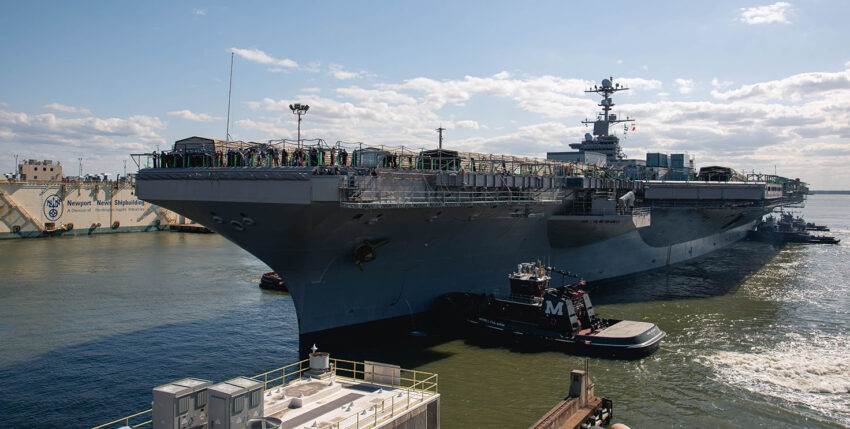If anything, then on a grand scale: the aircraft carrier USS John C. Stennis (CVN 74) arrived at Newport News Shipbuilding on 6 May to undergo its scheduled RCOH. This Refuelling and Complex Overhaul (RCOH) is scheduled about halfway through the planned service life of an aircraft carrier to make it fit for the coming decades. The most important part of the work is the renewal of the fuel rods in the on-board reactor. This requires the reactor to be shut down and cooled down. Only then can the fuel be replaced in a complex process and the reactor restarted later.
In addition, the shipyard laytime is always used to carry out necessary repairs, especially in hard-to-reach areas. To the RCOH of the Stennis This also includes work on the huge screws, gears and rudders.
At the same time, the US Navy is using the time to bring many technical installations and systems up to date. After all, the 332 metre-long carrier was commissioned back in 1993 and after 30 years many of the devices are either no longer up to date or have simply reached their intended service life. As one thing leads to another, the work now required adds up to more than a third of all maintenance and modernisation tasks in the carrier's life cycle. Even the planning of such a project is a Herculean task. The assessment and recording of damage, the ordering and production of spare parts, some of which were customised, and the preparations at the shipyard took three years. The shipyard has a wealth of experience, as the John C. Stennis is already the seventh ship in the Nimitz-class that passes through the RCOH.

Due to the complexity and scope of the planned work, the Navy is planning a total laytime of four years. Only towards the end of 2025 is the Stennis get going again. The process is also expensive: the navy has budgeted several billion dollars for all measures. If the Stennis Once it has water under its keel again, the US Navy will have a state-of-the-art ship with a remaining service life until the middle of the century.
Text: mb; Photos: Huntington Ingalls Industries/Ashley Cowan, US Navy










